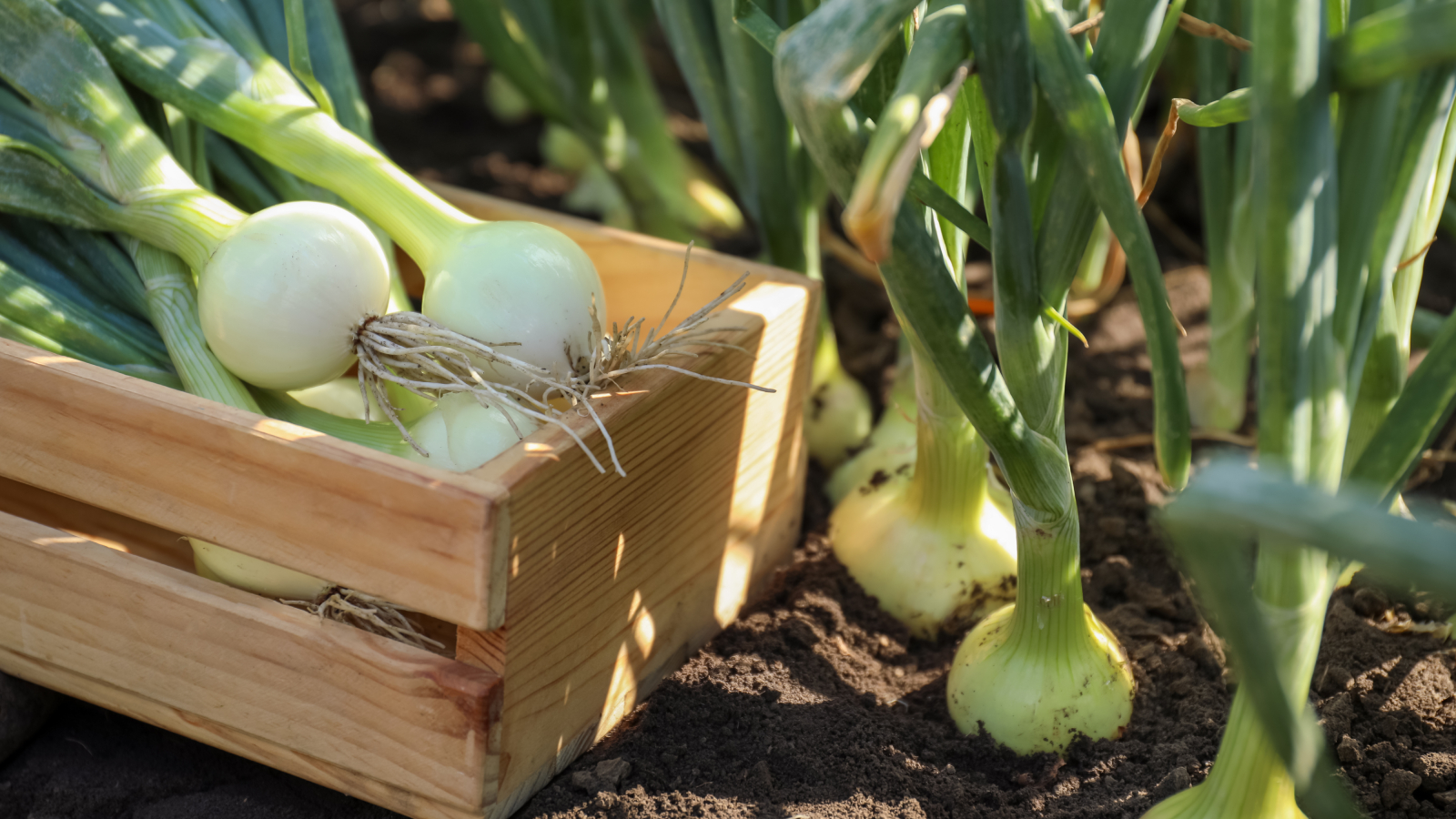How And When To Harvest Onions: Everything You Need To Know
Onions are an easy-to-grow kitchen staple that can last through fall and winter. Learn out how and when to harvest onions for tasty flavor all season long.

Humans have been growing onions for over 4,000 years and yet every year gardeners wonder about how and when to harvest onions for the best flavor. Thankfully, after several millennia of cultivation, we have the answer!
Onions are a popular cool season vegetable you can grow from either seeds, sets, or transplants. Learning how to harvest vegetables is important for every plant in your garden, but especially so for onions. These easy-care cool season veggies can provide a kitchen staple through the fall and winter.
Here's everything you need to know about how and when to harvest onions for delicious flavor all season long.
Readying Onions for Harvest
Your success in harvesting onions will depend on proper planting and care throughout the growing season. Growing onions from seed is a bit more difficult and will take longer before bulbs are ready to harvest. That's why many gardeners choose to grow onions from sets or transplants.
Plant onions sets as soon as the garden can be worked. Rich soil, consistent moisture and cool temperatures help bulb development. It's best to create hills for onions that are to be used for green onions but do not hill those to be used for bulbs.
When to Harvest Onions
In addition to good planting, you need to know when to harvest onions for the best flavor. Harvest tops for green onions as soon as they reach 6 inches (15 cm.) in height. The longer you wait to harvest the green tops, the stronger they become. Any bulbs that have bolted, or formed flower stalks, should be pulled and used right away; they are not good for storage.
It's time to start harvesting onions when their tops naturally fall over and brown. This is usually 100 to 120 days after planting, depending on the cultivar. The ideal onion harvest time is early in the morning when temperatures are not too hot.
Sign up for the Gardening Know How newsletter today and receive a free copy of our e-book "How to Grow Delicious Tomatoes".
How to Harvest Onions
Knowing how to harvest onions is important, as you don't want to damage the plants or onion bulbs. Carefully pull or dig onions up from the ground with the tops intact. You can do this by hand, with a trowel, or with a pitchfork. Be careful not to bruise your onions, as this can make them more susceptible to rot.
Gently shake the soil from the bulbs. You can use a soft brush or a gloved hand to remove excess dirt, but don't wash your onions yet. They still need to cure before you can use them.
Drying and Storing Onions
Once harvested, storing onion bulbs becomes necessary. Onions must first be dried before they can be stored. To dry onions, spread them out on a clean and dry surface in a well-ventilated location, such as a garage or a shed.
Cure onions for at least two to three weeks or until the tops necks are completely dry and the outer skin on the onion becomes slightly crisp. Cut tops off to within one inch (2.5 cm.) after drying is complete.
Store dried onions in a wire basket, crate or nylon bag in a place where the temperature is between 32 to 40 F. (0-4 C.). Humidity levels should be between 65 and 70 percent for best results. If the location is too damp, rotting may occur. Most onions can keep for up to three months if dried and stored properly.
- Amy DraissDigital Community Manager
- Laura WaltersContent Editor